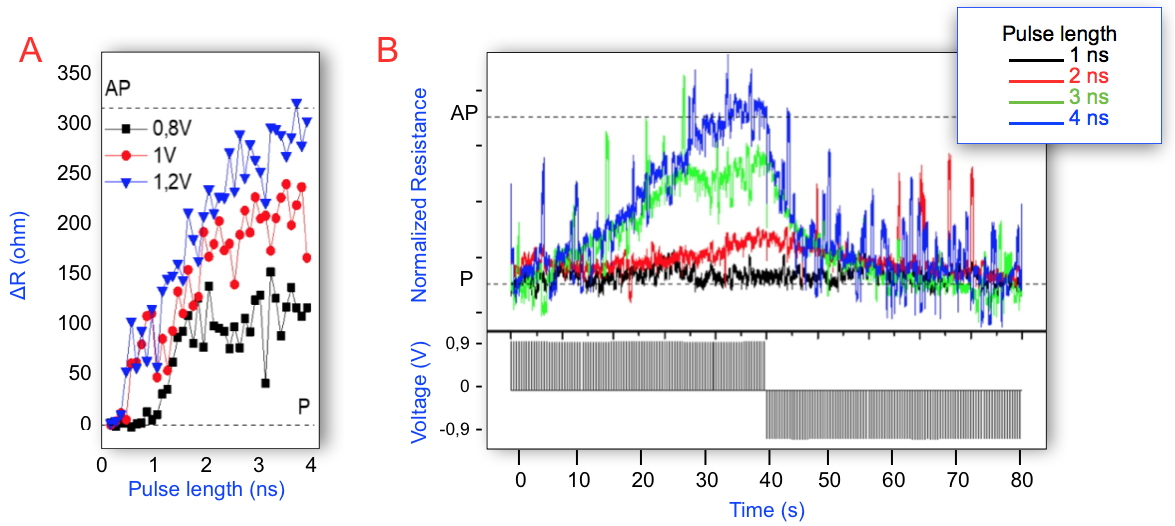Neuromorphic computing is a bio-inspired technology that aims to mimic the functioning of the brain. It could be used for economical and fast applications thanks to the implementation of artificial neural networks and synapses. To realize a neuromorphic circuit, it is necessary to have an electronic component whose functioning is as close as possible to the biological synapse. The question that arises is whether it is possible to mimic the behavior of a synapse using the tools of spintronics?
How does a synapse function?
A synapse receives excitatory and inhibitory signals from incoming neurons. It transmits the action potential if the sum of the excitatory and inhibitory signals is greater than a given threshold. Transposed to spintronics, this mechanism requires an electronic component whose state varies in a monotonic way with the signals it receives, positively or negatively. IRIG researchers have worked on the implementation of such an electronic component, the "memristor". This new spintronic memristor is based on the tunnel junctions already used in magnetic memories. As a reminder, tunnel junctions are made of two magnetic layers separated by a thin insulating layer. The electric current crosses it by tunnel effect, hence the name of the element. The junction resistance depends on the relative orientation of the magnetizations of the two magnetic layers. One of the layers, called reference layer, has a fixed magnetization. The magnetization of the second layer can be varied, for example by applying a magnetic field. Normally, for a conventional memory application where only two states are requested, ("zero" or "one"), the magnetizations are parallel (P) or antiparallel (AP) (
Figure).
The picture is very different if the ambition is to mimic a synapse. In the memristor, the magnetization of the free layer can turn and take different orientations, which generates several possible values of resistance. Moreover, these values depend on the direction of the electric current that passes through the junction, which reminds us of the functioning of a synapse according to the excitatory or inhibitory potential. Thus, a first step has been taken by the IRIG researchers towards the realization of a neuromorphic circuit.

Electrical characterization of the memristor
A - Variation of the resistance of the magnetic tunnel junction, when the respective magnetizations vary between the parallel (P) and anti-parallel (AP) configuration, as a function of the duration of the applied voltage pulse, for different voltage amplitude.
B - Evolution of the resistance of the device when it is subjected to a pulse train of positive amplitude followed by a pulse train of negative amplitude.